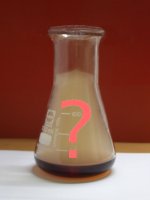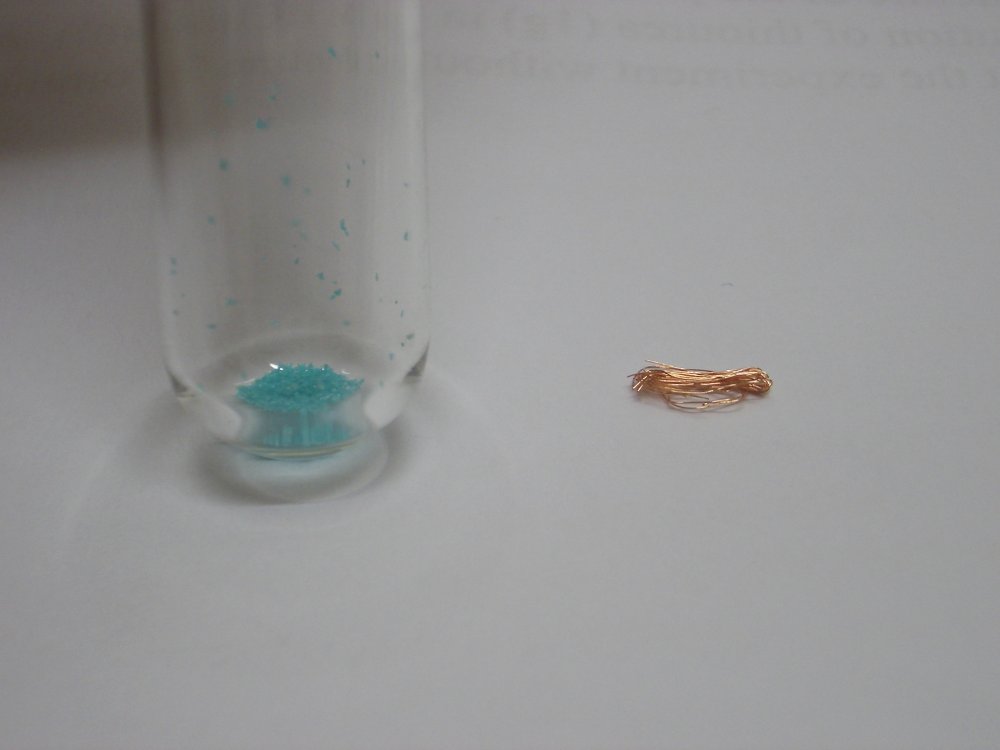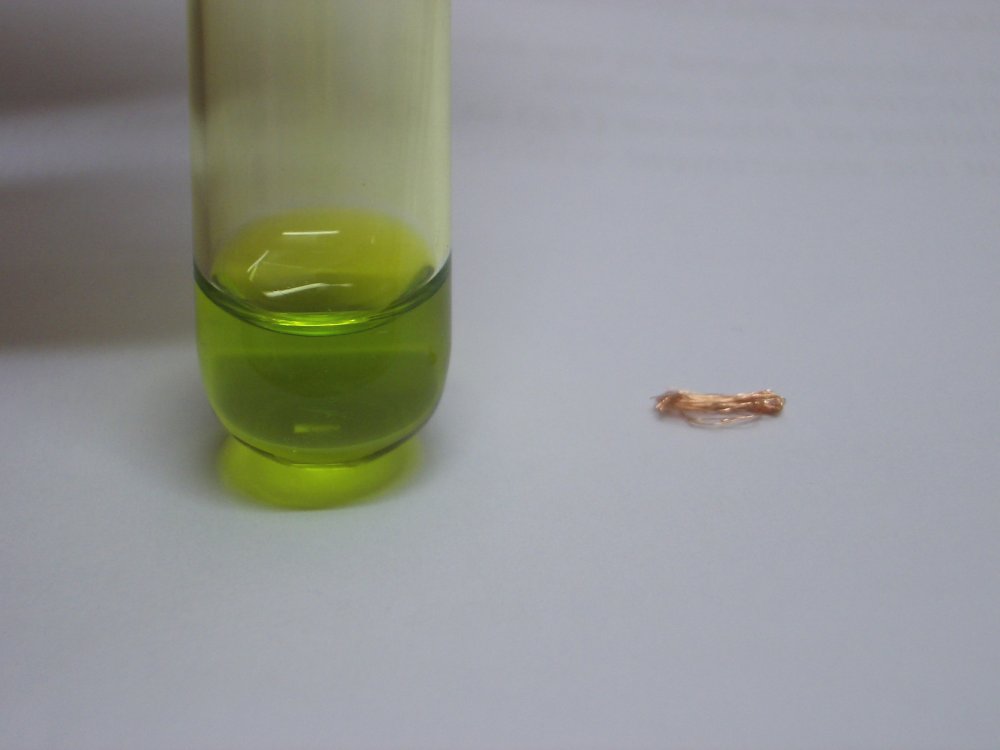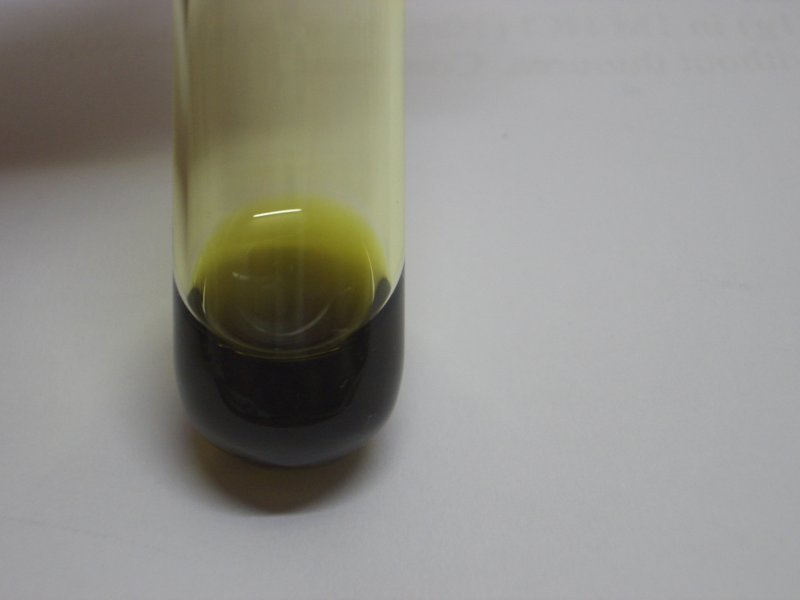


CuCl2·2H2O, HCl and copper
When metallic copper is brought in a solution with copper (II) and a high concentration of chloride is present as well, then a dark compound is formed. This probably is a mixed oxidation state copper(I)/copper(II)/chloride complex. What is the exact nature of this dark compound?
The dark compound only is formed when chloride is present in high concentration. When sulphuric acid is used, then no similar reaction occurs.
![]()
![]() Required chemicals:
Required chemicals:
-
copper (II) chloride, dihydrate
- metallic copper
- concentrated hydrochloric acid, 30% HCl
![]()
Copper (II) and copper (0) in concentrated hydrochloric acid
Put a small amount of CuCl2.2H2O in a test tube and set aside a small amount of copper wire:
Add some HCl (30%) to the test tube and shake a while, until all copper chloride is dissolved. The liquid now is green/yellow:
Finally add the small piece of copper and shake for a few minutes. After a few minutes the result is as follows:
The liquid has become much darker. A special reaction occurs.
Copper (II) reacts with copper (0) to form copper (I). Copper (I) goes in solution as colorless CuCl2¯. So one would expect the liquid to become lighter on addition of some metallic copper. Instead of this, the liquid becomes much darker.
![]()
Discussion of results
Question now is: what is the dark compound? The dark compound cannot simply be a compound of copper (II). Addition of metallic copper results in formation of copper (I). The only plausible explanation is that the dark color is due to formation of a copper (I)/copper (II) complex. One could postulate the increase of concentration of copper (II) as the cause of the darkening of the liquid, but another experiment with constant total concentration of copper falsifies this explanation.
Remarks:
- The experiment can also be carried out with copper sulfate instead of copper (II) chloride. Dissolving the copper sulfate in concentrated hydrochloric acid requires more patience, but finally, a yellow/green solution is obtained which works equally well.
- The copper, used in the experiment is simple electrical wire, from which the isolating coating is removed.
- The experiment cannot be done with sulphuric acid or nitric acid. The presence of chloride at high concentration is essential.
back to main copper riddle page


